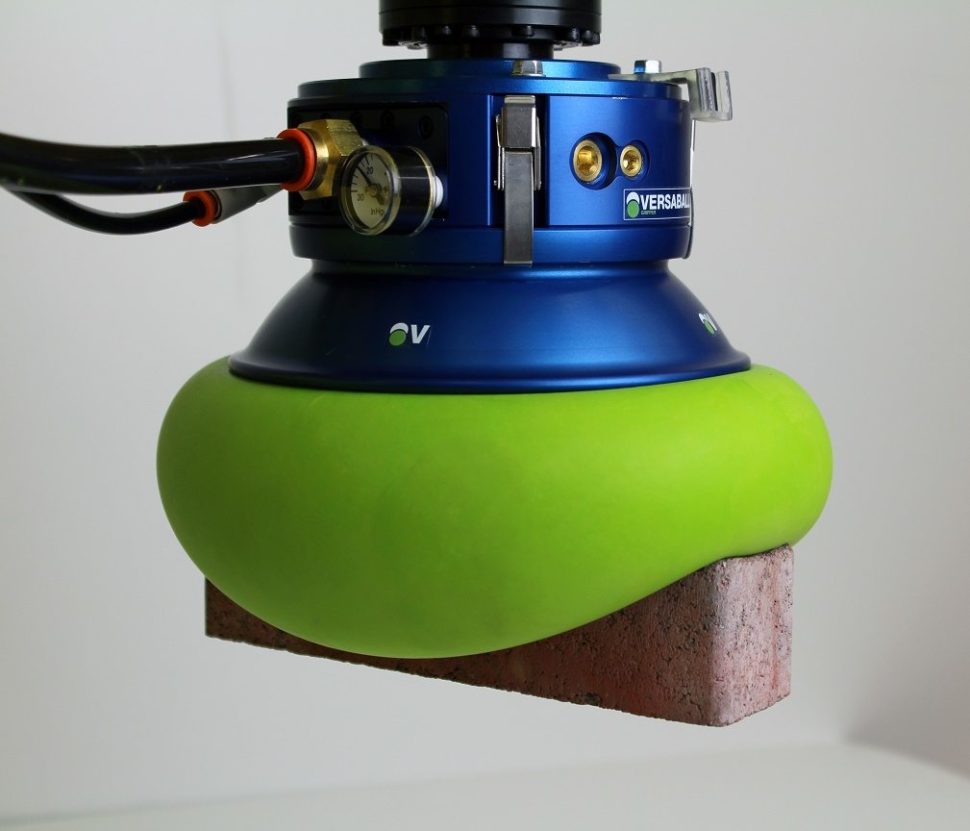Soft Robotics is still an emerging industry, and because of that, researchers are facing scalability challenges. The final reports of failed soft robotics endeavors provide insight into how to appeal to buyers and keep your company alive in an increasingly competitive market.
In 2012, researchers and engineers at Empire Robotics were some of the first to attempt commercializing their soft robotics technology, VERSABAL®. VERSABAL® is a soft robotics mechanism that uses jamming-based gripper tech, which is versatile in its ability to grasp and handle objects of different sizes. Unfortunately, the team discovered that the challenge of commercializing their product proved to be an insurmountable hurdle, and were forced to shutter the doors of their company last year in 2016.
Here are 5 lessons on soft robotics commercializationClick To TweetIn a final report, the team outlines their journey as a soft robotics tech company, detailing their struggles to gain a firm foothold in the robotics commercialization realm and offering some strategies for future soft robotics research teams that want to begin commercializing their products. More of an explanation of the life of their venture, the report also somewhat serves as a guide of things to consider for current soft robotics researchers.
Five Lessons Learned in Soft Robotics Commercialization:
1. Competition With Rigid Robotics
For decades, “rigid” robots have been able to transition from the research lab into commercially viable products. Unimate was the first industrial robotic arm sold in 1960, and since then, there have been scores of rigid robotics prototypes that have been able to assimilate into mainstream industrial, medical, defense, entertainment, and household culture.
The iRobot Roomba®, the mobile warehousing robots of Kiva Systems (now Amazon Robotics), and the robot arms of Universal Robots” are just a few example of rigid robotics that have become successful commercial endeavors. The robot market is estimated at about $13 billion dollars, and it is growing steadily every year.
Part of the reason for the success of these robots is the longevity that they have experienced in our culture. Robotic helpers have been the (sometimes literal) face of the future for years. When we think of the word “robotics” we think of durable mechanical devices that have been designed to make life easier in ways that general people find to be uniquely useful. This gives traditional rigid robotics researchers an advantage when they seek to commercialize their tech- there is already a market for it.
Soft robotics? Not so much.
2. Fear of the Unknown
Often, the biggest challenges that researchers face with new SORO technology have less to do with the integrity of their products, which have been researched and vetted thoroughly, and more to do with how to commercialize and appeal to buyers in the market.
Robots need to include innovative technology features while also serving a useful purpose that is easy for buyers to understand. At the same time, real world applications of soft robotics can only be explored through the commercialization of products. This leaves researchers with a bit of a conundrum on their hands.
Indeed, soft robotics often have soft, multipurpose definitions, so it is important to stress the explicit functionality of the product before taking steps to commercialize.
3. Know Your Buyers
It is important to know who to market to when attempting to develop a product for commercialization.
Empire Robotics chose to market in the industrial robotics sector, which made sense for the product’s function. In the field of soft robotics, there are often many industries that research can apply to, but by focusing on just one, it will be easier to refine the product for a specific market.
4. The Challenge of Durability
In rigid robotics, durability is often determined by the hardness or stiffness of the material. With SORO, however, the concept of durability becomes a challenge because of link between the material of the product and its ability to function. Since material determines functionality in many cases, researchers at Empire Robotics had to redesign their jamming based grippers so that inevitable part replacements would be as easy as routine maintenance for buyers.
5. Design Compromises
Soft Robotics products must be designed in a way that is convenient for potential buyers. If a product, like the VERSBAL® jammer, requires a vacuum to function properly, instead of forcing buyers to have to purchase an extra piece of machinery, researchers at Empire Robotics made sure that there was a vacuum mechanism included. Other things to think about are the amount of air pressure or power that final buyers will be able to provide, which varies from place to place. If a company does not have the necessary equipment for a product to function at maximum performance, it will be a waste of time for all parties involved.
Moving Forward
In the field of soft robotics, many of the most promising results have not yet had enough time to be vetted in the real world. It is through this next major milestone of technology commercialization that we will determine whether the field of soft robotics can establish itself as a foundational research area that positively impacts society.
Empire Robotics, Inc., is still working towards the commercialization of other soft robotic technologies, taking what they learned from their initial failure and applying it to a new endeavor. Other emerging SORO companies include SynTouch LLC, RightHand Robotics, Inc., Pneubotics, Inc., and Otherlab Orthotics.
If researchers are serious about having commercial success, they will have to consider the best ways to commercialize during the research and development phase of their products.





Comments (0)
Most Recent